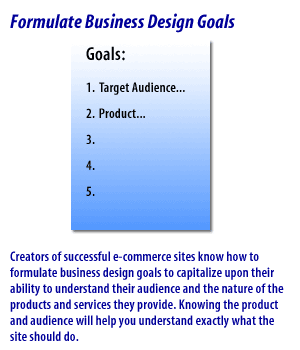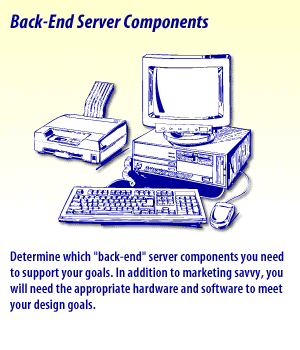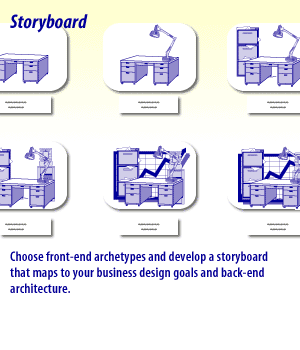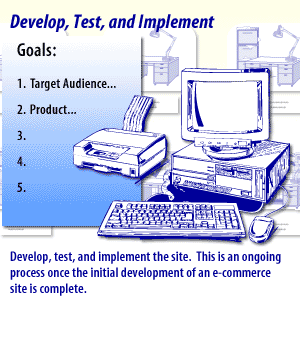| Lesson 2 | Planning an e-commerce site |
| Objective | Outline the process for planning and designing a site. |
Planning an e-commerce Site
Many methods of constructing and conducting e-commerce are currently available.
You can create your own site using your own hardware and software, you can share hardware and software, or you can use a third party.
Part of the beauty of ecommerce is the ability to tailor your systems to your preferences and to the needs of your audience. You can also provide a range of e-commerce functions, including real-time inventory updates, access to older systems, call centers, address books, free email stock quotes, and map services. Examining all possible options is beyond the scope of this course.
Nevertheless, you should understand that, as an e-commerce developer, your task is to find ways to present information in various settings. This includes creating businesses from scratch, as well as implementing a new selling strategy for an already-established company. The SlideShow below summarizes the overall process for planning and designing a site.
You can create your own site using your own hardware and software, you can share hardware and software, or you can use a third party.
Part of the beauty of ecommerce is the ability to tailor your systems to your preferences and to the needs of your audience. You can also provide a range of e-commerce functions, including real-time inventory updates, access to older systems, call centers, address books, free email stock quotes, and map services. Examining all possible options is beyond the scope of this course.
Nevertheless, you should understand that, as an e-commerce developer, your task is to find ways to present information in various settings. This includes creating businesses from scratch, as well as implementing a new selling strategy for an already-established company. The SlideShow below summarizes the overall process for planning and designing a site.




Ecommerce Planning Process
Each of these steps requires careful consideration of both technical and business issues.
As you think through each step in the implementation of your site, consider your Web interface; the front end, or Web pages a user will actually see; and the back-end, or server-side, issues.
As you think through each step in the implementation of your site, consider your Web interface; the front end, or Web pages a user will actually see; and the back-end, or server-side, issues.
Front-end and Back-end Challenges
In regard to an e-commerce site, the front end to your site is the interface seen by the customer.
It is what many call the home page.The back end comprises the server architecture, scripting, and database solutions necessary to make the front end functional. Therefore, to have a successful login screen for your front end, you will need to have scripting, Secure Socket Layer (SSL), and database solutions present on the back end which could be an open source solution from PostGreSQL 8.2 or MySQL.
It is what many call the home page.The back end comprises the server architecture, scripting, and database solutions necessary to make the front end functional. Therefore, to have a successful login screen for your front end, you will need to have scripting, Secure Socket Layer (SSL), and database solutions present on the back end which could be an open source solution from PostGreSQL 8.2 or MySQL.
Front End Features
- Three tier hierarchy: Category/Subcategory/Product
- Clear Navigation
- Easy to integrate into existing site
- Ability to have multiple navigation based on main focus of subject
To assist you in the planning process, we have included a checklist that will help you evaluate your technical e-commerce needs.
You will learn more about mapping business issues to technical concerns throughout this course.
In the next lesson, you will learn how to formulate business design goals.